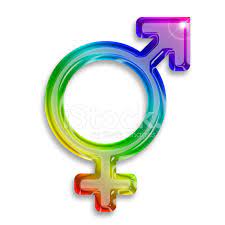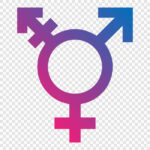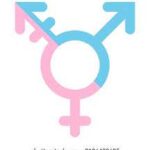In a world where beauty standards often feel rigid and confining, the concept of "feminine beauty" has been historically upheld, leaving little room for the appreciation of diversity in female appearances. One such diversity lies in women who possess masculine features—a topic that can evoke curiosity, admiration, or confusion. This article aims to explore the multifaceted aspects of femininity and masculinity as they coexist, celebrating the uniqueness of each individual. From scientific explanations to personal stories, we’ll journey through this intriguing subject, helping to broaden perspectives and foster acceptance of all forms of beauty.
Understanding Masculine Features in Females: A Quick Guide
Masculine features in females can manifest in various ways, including broader shoulders, a strong jawline, and prominent cheekbones. These traits can be influenced by genetics, hormonal levels, and even environmental factors. Rather than viewing them as anomalies, it’s essential to recognize that such features contribute to the rich tapestry of human diversity. Just as some men may possess delicate features, women with masculine traits can embody strength and grace in equal measure.
Understanding these characteristics can help shift the narrative around gender and appearance. In many cultures, masculine traits in women have historically been misunderstood or stigmatized, leading to feelings of inadequacy for those who embody them. However, acknowledging that beauty comes in many forms encourages a more inclusive perspective that honors individuality rather than adhering to outdated stereotypes.
Common Misconceptions About Gender and Appearance
One of the biggest misconceptions about gender and appearance is the belief that femininity is synonymous with fragility. Many people assume that women with masculine features are less feminine or even that they struggle with their identity. In reality, femininity and masculinity exist on a spectrum, and a woman can be both strong and nurturing, assertive and graceful—regardless of her physical traits.
Another misconception is the idea that masculine features can only arise from hormonal imbalances or other medical conditions. While hormonal factors can influence appearance, many women are simply born with traits that society labels as masculine. Understanding that these features are part of natural human variation helps to dismantle harmful stereotypes and promotes acceptance among individuals of all appearances.
The Science Behind Female Masculine Traits Explained
The development of masculine features in females is influenced by a complex interplay of genetics and hormones. For instance, testosterone is often associated with masculine traits, but women naturally produce this hormone too. Depending on genetic makeup and hormonal balance, some women may develop traits more commonly recognized as masculine, such as increased muscle mass or facial structure.
Moreover, research has shown that societal perceptions of gender are deeply rooted in biological functions but can also be shaped by cultural and environmental factors. As a result, the expression of gender-related traits is not just biological; it can also be influenced by lifestyle choices, such as diet and exercise. Understanding this science can encourage a more nuanced view of what it means to be feminine in today’s world.
Celebrating Diversity: Beauty Beyond Traditional Norms
The beauty industry has traditionally glorified a narrow set of features that often exclude those with masculine traits. Yet, as society evolves, there’s a growing movement that embraces diversity in all its forms. Social media platforms have become a powerful tool for individuals to showcase their unique beauty, allowing women with masculine features to challenge traditional norms and redefine what beauty means.
Celebrating diversity goes beyond aesthetics; it’s about embracing who we are and the myriad ways that identity can be expressed. From runway shows featuring models of all shapes and sizes to influencers sharing their journeys of self-acceptance, the conversation around beauty is expanding. By recognizing and celebrating feminine beauty that includes masculine features, we pave the way for a more inclusive and accepting society.
Real Stories: Women Embracing Their Masculine Features
Numerous women have shared their journeys of self-acceptance and empowerment regarding their masculine features. Stories of overcoming bullying, societal pressure, and self-doubt are common threads. For many, embracing their unique traits has led to increased confidence and even a passion for advocacy. They serve as powerful reminders that beauty isn’t confined to conventional norms, and every individual has the right to love themselves fully.
One striking example is a female athlete who, often praised for her athleticism, also faced criticism for her strong jawline and muscular build. Rather than conforming to traditional beauty standards, she chose to celebrate her body and promote physical strength as an essential aspect of femininity. Her story has inspired countless women to embrace their own features and stand proud in their skin.
Fashion Tips That Flatter Masculine Features in Women
Fashion can be a fantastic outlet for expressing individuality and embracing one’s unique features. For women with masculine traits, choosing the right clothing can enhance their natural beauty while also reflecting personal style. Structured pieces such as blazers and tailored pants can highlight strong shoulders, while flowy or draping fabrics can soften the overall look, creating a balanced aesthetic.
Accessorizing plays a crucial role as well. Jewelry, hats, and scarves can draw attention to the face or accentuate personal style without overshadowing features. Understanding body shape and fabric types can empower women to dress in a way that feels authentic and makes them feel confident, regardless of societal expectations.
Navigating Social Perceptions: What to Expect
Navigating social perceptions can be challenging for women with masculine features. While some may receive compliments on their uniqueness, others might face ignorance or even harsh judgments. It’s important to remember that reactions from others often reflect their own insecurities or biases rather than being a measure of one’s worth. Building a strong sense of self and surrounding oneself with supportive individuals can create a buffer against negativity.
Developing resilience and understanding that not everyone will embrace diversity can also help. Engaging in open conversations about gender and appearance can educate others and potentially shift their perspectives. Many women find empowerment in sharing their stories and experiences, transforming societal perceptions one conversation at a time.
Empowerment Through Self-Acceptance: Own Your Look
Ultimately, the journey toward self-acceptance is deeply personal and empowering. Embracing one’s masculine features can lead to a profound sense of identity and self-worth. Recognizing that beauty comes in multifaceted forms allows women to redefine their standards and preferences, empowering them to celebrate their uniqueness fully.
Owning one’s look is not just about acceptance; it’s also about empowerment. When women embrace their masculine traits, they send a powerful message to themselves and others about the importance of authenticity. This self-acceptance can inspire future generations to love themselves as they are, fostering a culture of confidence and inclusivity.
In conclusion, the narrative surrounding female masculinity is as diverse as the individuals who embody it. By understanding the complexities behind masculine features, dismantling misconceptions, and embracing uniqueness, we pave the way for a more inclusive understanding of beauty. The stories of women who have embraced their masculine traits are a testament to the power of self-acceptance and the importance of celebrating diversity. Let’s continue to champion a world where every form of beauty is recognized and appreciated, allowing everyone to own their look with pride.


